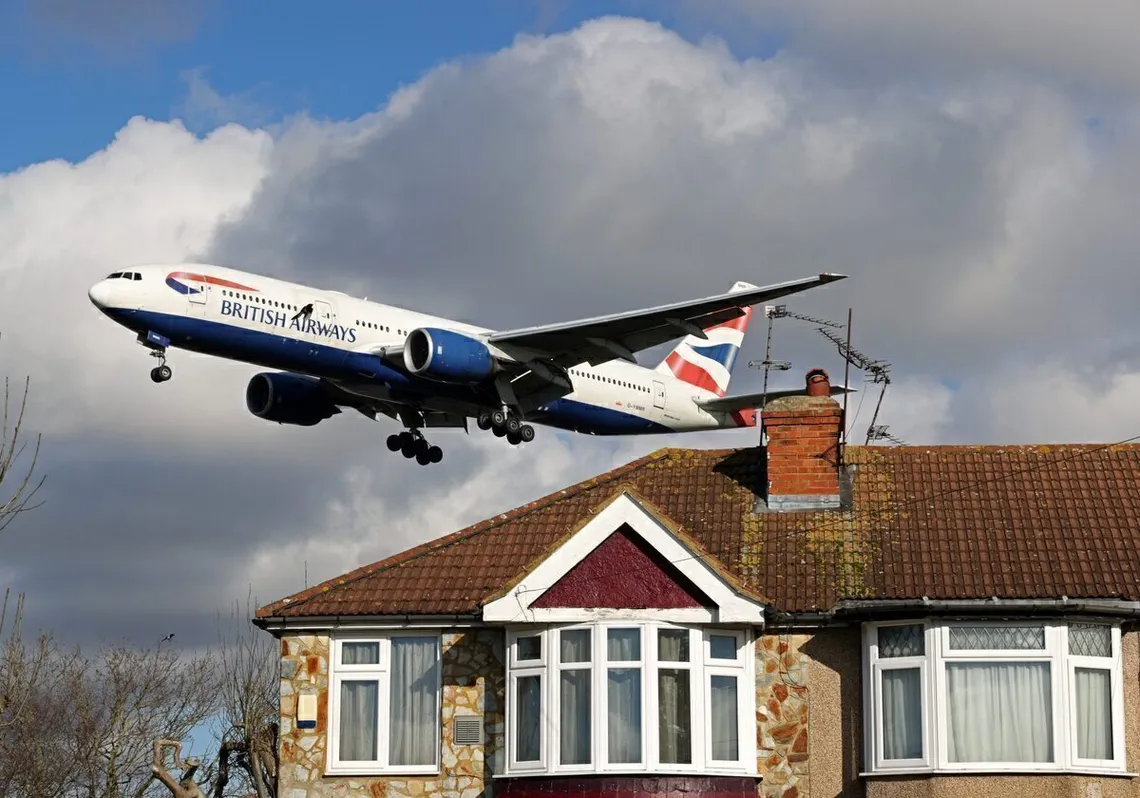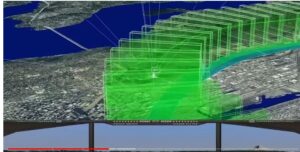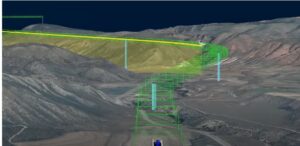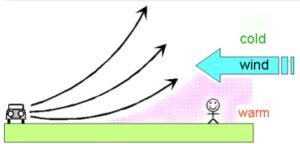
No. And maybe. Objectively speaking, individual aircraft flyovers near Sea-Tac Airport are not getting lower or louder. (Before you click away in disgust, note that some of our members live as low as ‘760’, ie. when correcting for sea level less than 400 feet directly under the belly of an aircraft. No one is more annoyed than us about the situation.)
Altitude

 As to the elevation, as NextGen has taken hold (which boils down to GPS/computer-controlled navigation), the flight tracks have become unbelievably consistent, especially on final approach. The industry takes this very seriously for many reasons, not least of which because it saves fuel, one of their largest costs.
As to the elevation, as NextGen has taken hold (which boils down to GPS/computer-controlled navigation), the flight tracks have become unbelievably consistent, especially on final approach. The industry takes this very seriously for many reasons, not least of which because it saves fuel, one of their largest costs.
Therefore, it is becoming very unusual for any flight to be more than 100 ft. out of its desired alignment on either the x, y or z axes.
So… onto the noise.
The FAA can say with confidence that there is ‘less noise’ because the fleet is getting quieter. But that is primarily because of how they define noise. They actually have a separate term of art, ‘annoyance’ to account for how the sound affects you. But that is not what they call noise.
Fleet
Newer planes, such as the Boeing 777 and Airbus A380 are objectively much quieter than the older, roaring 747s. So the average noise of each separate event (an airplane flying over your head) is getting quieter. There may be one or two real bad ones left (the infamous late night Asian 747 cargo flights) but even they are being phased out.
Measurements
There are 24 permanent noise monitors, located near Sea-Tac Airport. Their locations are not optimal, but their readings on individual events are remarkably consistent over time. We read the reports and you can too.
And regardless, the data they gather has nothing to do with FAA law. The FAA keeps a spec sheet describing how loud each aircraft is supposed to be based on its model, engines and so on, which provides a calculated noise level over various types of terrain at various altitudes. Truly, It’s a calculation. So you can call the complaint line 100,000 times, those complaints are duly noted and absolutely nothing will happen.
Because assuming that each aircraft is in spec during flight and flying in the proper path (and it would be extremely unusual for them not to be) they are assumed to have the same loudness. Except…
Pilot discretion
Except to the extent that the pilot has momentarily stepped on the gas or perhaps applied reverse thrust at some point during landing. The latter does happen from time and it can be a source of real annoyance to people (especially those living opposite to the runways, eg. Burien) However, the FAA gives discretion to each pilot on these points in order to afford a safe and efficient landing. “Safety and Efficiency” are in the law. “Annoyance” is not.
Weather
 Changes in weather really do affect one’s perception of loudness, ie. “annoyance.” However, the noise monitors tend not to capture this effect. And again, this psychological perception of loudness does not enter into Federal law. Currently, there is no accounting for ‘atmosphere’.
Changes in weather really do affect one’s perception of loudness, ie. “annoyance.” However, the noise monitors tend not to capture this effect. And again, this psychological perception of loudness does not enter into Federal law. Currently, there is no accounting for ‘atmosphere’.
But in the ESA Noise 101 Seminar, there is a pretty good explainer on how atmospheric conditions in the “Propagation of Noise” section.
Time of day
Noise events which occur at night, particularly during sleep, are perceived as especially annoying. There’s a reason ‘things that go bump in the night’ are especially scary. Again, FAA law says nothing regarding time of day except that there can be no limitations, ie. curfew. Why? For the same reason there are no curfews on railroads or highways or sea ports. The sky is considered a part of the Federal transportation system and the transportation system is 24/7/365.
Visual perception
There have been at least a few studies which indicate that vision affects the perception of loudness. In other words, if an elephant looms in front of you, its roar is perceived as being much louder. It may be the case that when we see an aircraft looming overhead, it just feels louder. Again, remember that our bodies are programmed to respond to loud noises as a threat. Large object. Loud Noise. Danger, Will Robinson!
Frequency
Also, one’s perception of ‘annoyance’ changes based on the frequency of flights, both short term and long term. In other words, one’s perception of loudness is different if you hear an isolated ‘boom’, vs. ten ‘booms’ spaced every few minutes. And it also is different if those intervals are random.
The FAA’s noise regulations do try to take that short term effect into account when displaying the apparent noise of each flight using a term called SEL. It is a flawed calculation, but we admire the guts it takes to attempt to quantify something so unquantifiable.
But regardless, there is nothing in Federal law to regulate this. One or 1,000 SEL passing over your head, an airline cannot be penalised, so long as each aircraft flies within spec.
The cumulative effect part I: psychology
However, when you hear aircraft constantly going by it affects one’s perception of loudness cumulatively. It’s not your imagination. While some people claim to become accustomed to the noise (or even to enjoy it!), others get sick of hearing any loud noises. In other words, some people seem to become permanently more sensitive to any noise events.
The cumulative effect part II: physiology
But whether you like it or not, it is important to note that the constant exposure is negatively impacting your health. Permanently. Remember: human beings have evolved to sense loud noises as threatening. Loud noises mean danger and danger is supposed to be an unusual event. Over time, your body’s various systems (cardiac, stress hormones) seem to adapt to what is a very unusual state of affairs (hundreds of repeated threat events every day) in not particularly great ways.
You can read one good summary on the health effects of noise on children in a well-regarded Cornell study, and on the health of everyone near Sea-Tac Airport in the 2019 Community Health and Airport Operations Related Pollution Report.
Summary
Objectively: the flight paths and altitudes are now very consistent. And unless you can document an aircraft flying in a very atypical manner, the FAA assumes that it is likely no louder (or softer) than any other similar flight. Overall, the fleet is getting quieter, but the frequency of flights is definitely increasing.
Taking those facts into account, it’s basically irrelevant as to whether or not SEL are measurably louder or not.
However, there are several factors, which do affect your perception of annoyance, both at the SEL and cumulatively.
At bottom, when a 400,000 lb. tube of metal, flying 250 miles an hour, low enough to read the serial number on the belly, is passing over your house several hundred times a day, it is affecting your perception; both of altitude and loudness. Whether you realize it or not, your body is responding to a perceived threat as it has evolved to do over hundreds of thousands of years.
1Those perceptions, and the cumulative effects to the body, are not your imagination and it would be an improvement to FAA law to take them into account in regulating aircraft flight paths.
2The FAA Authorization must be renewed every five years, The upcoming 2023 version may include reforms to address some of these issues.
